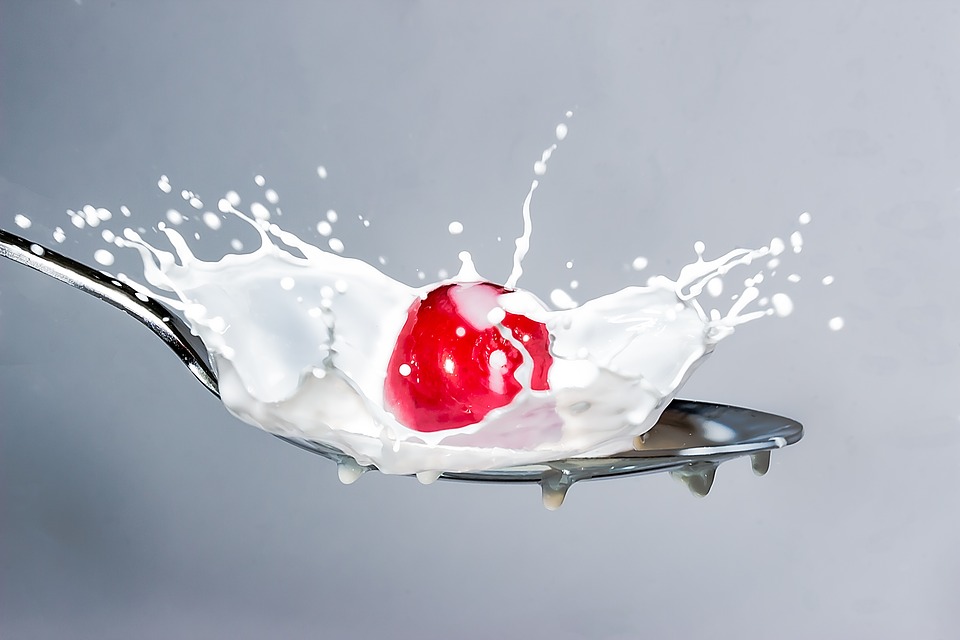Milk in its natural form has a high nutritive value as it is a good source of quality proteins, fats, carbohydrates, vitamins and minerals. Milk proteins also supply amino acids needed for the proper growth of adults and infants. India achieved an output of 132.4 million tons of milk (mainly from cows and buffalos) during 2012 to 2013, compared to 127.9 million tons in 2011 to 2012, which is a growth of 3.5%. Projections for the country's total milk production during the year 2013 to 2014 are approximately 138 million tons (Department of Animal Husbandry, Dairying & Fisheries 2014). The country accounts for approximately one‐third of developing country production and 18% of the world's total milk production (FAO 2013, 2015).
Melamine
According to the World Health Oraganisation, "Melamine is an organic base chemical most commonly found in the form of white crystals rich in nitrogen and is widely used in plastics, adhesives, countertops, dishware, whiteboards." Melamine is 66% nitrogen by molecular weight. It is combined with formaldehyde by industry to produce melamine resin, a very durable thermosetting plastic, and melamine foam, a polymeric cleanser.
Why melamine is added into milk and milk products
Melamine is rich in nitrogen, and relatively cheap. Adding it to sub-standard or watered-down milk makes the milk’s protein level appear higher. Standard quality tests estimate protein levels by measuring nitrogen contentKjeldahl method detects not only nitrogen in protein but also nitrogen in all organic nitrogenous compounds, including melamine. Kjeldahl method is unable to detect the melamine in milk and food product.
Toxicity of melamine
Melamine is not metabolized and is rapidly eliminated in the urine. No human data could be found on the oral toxicity of melamine but there are data from animal studies. These show the compound to have a low acute toxicity, with an oral LD50 in the rat of 3161 mg/kg body weight. In animal feeding studies, high doses of melamine have an effect on the urinary bladder, in particular causing inflammation, the formation of bladder stones and crystals in the urine. Analysis of the bladder stones has shown that these are a mixture of melamine, protein, uric acid and phosphate. Animal studies have shown signs of renal toxicity only after long-term and high dose exposure.
2008 Chinese milk scandal
Milk and infant formula adulterated with melamine has been of high concern since September 2008, when in China, six children died due to the presence of melamine in their food. Kjeldahl method is used universally for quantitative method for assessing protein content in food and milk. The official data released by the Ministry of Health of the People's Republic of China on September 21, 2008, stated that a total of 52,857 children had received treatment for melamine-tainted milk.
Melamine was linked to the deaths of cats and dogs in the United States last year after it was added to wheat gluten and other pet food ingredients exported from China, in another attempt to boost the products’ apparent protein content.
FSSAI permissible limit
To check adulteration in milk and milk products, the Food Safety and Standards Authority of India has notified the maximum permissible levels of the contaminant — melamine — in dairy products. The food safety authority had, in July, proposed the maximum prescribed limits and had invited public comments, which have now been notified.
According to the notification, FSSAI has imposed a permissible limit of 1 mg of melamine in every kg of powdered infant formula, 0.15 mg a kg in liquid infant formula and 2.5 mg a kg in other foods.
Contamination levels
The Chinese Administration of Quality Supervision, Inspection and Quarantine (AQSIQ) has reported to have found levels of melamine in dairy products (including Infant Formula) that ranged between 0.09 to 6196.61 mg/kg. In food processing ingredients (i.e. egg yolk, egg albumen powder, etc.) the levels found ranged between 0.1 to 5.03 mg/kg. Fresh eggs produced in China have also been found to be contaminated with the chemical compound at levels that ranged between 3.1 to 4.7 mg/kg. The Center for Food Safety, Hong Kong SAR, has reported levels of 6.6 mg/kg in a brand of animal feed produced in mainland China.
Due to the current event various countries had also initiated the performance of melamine tests in products that originate from China or that had been manufactured using Chinese ingredients. The official levels reported by national authorities ranged between 0.38 to 945.86 mg/kg for dairy products. For processed foodstuff and food processing ingredients the levels ranged between 0.6 to 6694 mg/kg. Animal feed manufactured in China has also been reported to contain melamine traces in amounts that ranged between 61 to 797 mg/kg.
Use of melamine in India
Melamine powder is costly in India. It is about Rs 110 to 200/kg. So no case of melamine adulteration in milk was reported in India. Water is the most common adulterant used, which decreases the nutritional value of milk. Other main milk adulterants are detergents, urea neutralizers, sodium chloride and veg. oil.
Source: in.reuters.com, WHO, https://onlinelibrary.wiley.com/doi/full/10.1111/1541-4337.12181#crf312181-bib-0020, JASN February 2009, 20 (2) 245-250; DOI: https://doi.org/10.1681/ASN.2008101065, Emerg Health Threats J. 2010; 3: e5. , International Journal of Dairy Technology DOI: 10.1111/1471-0307.12274
